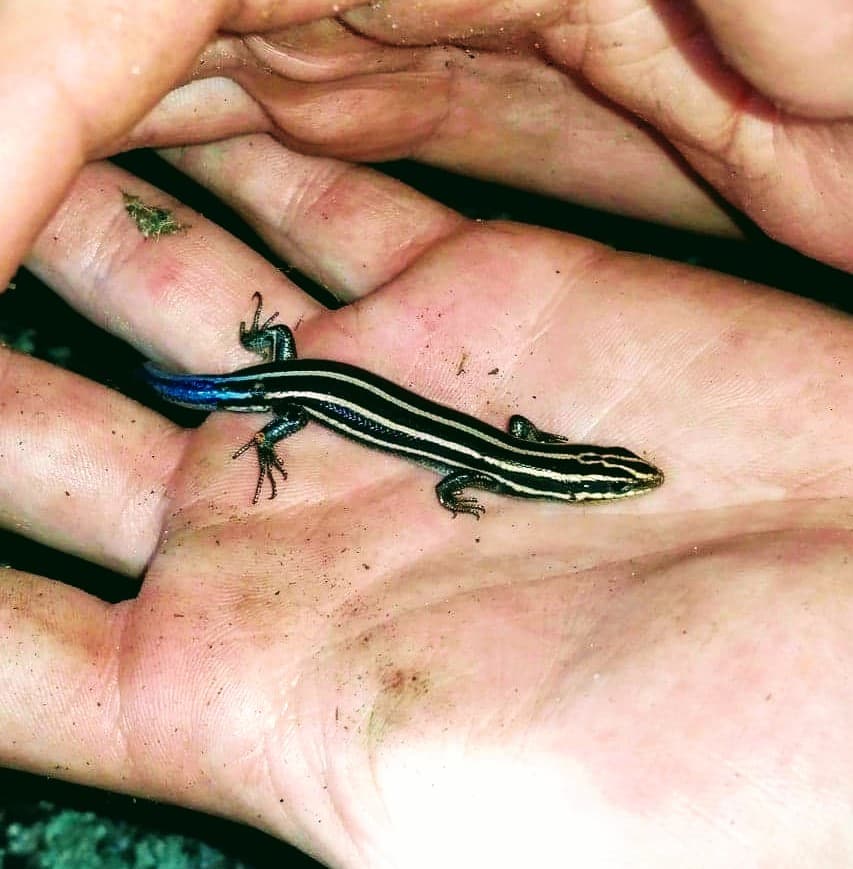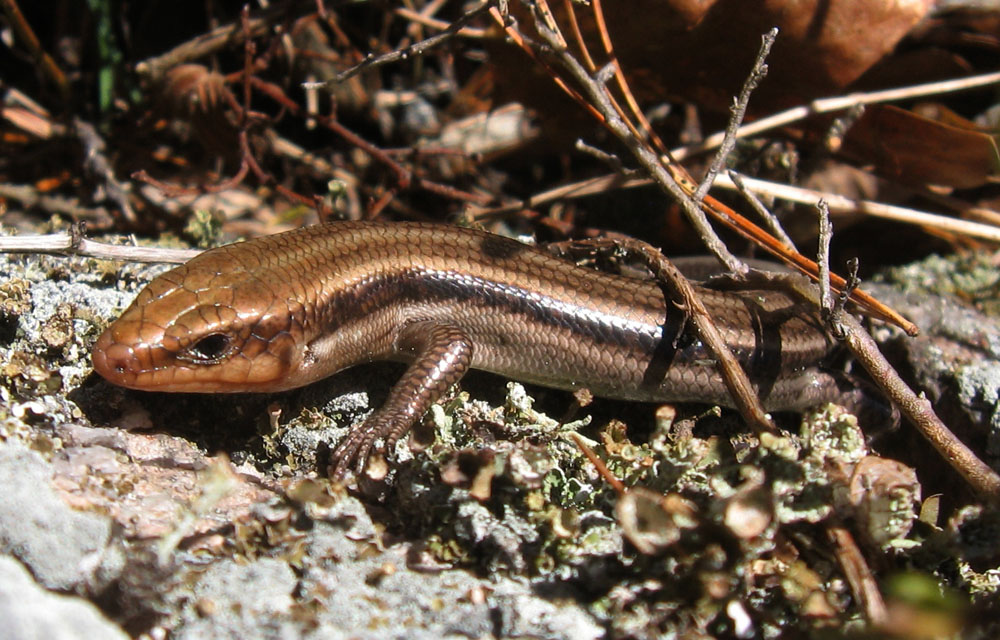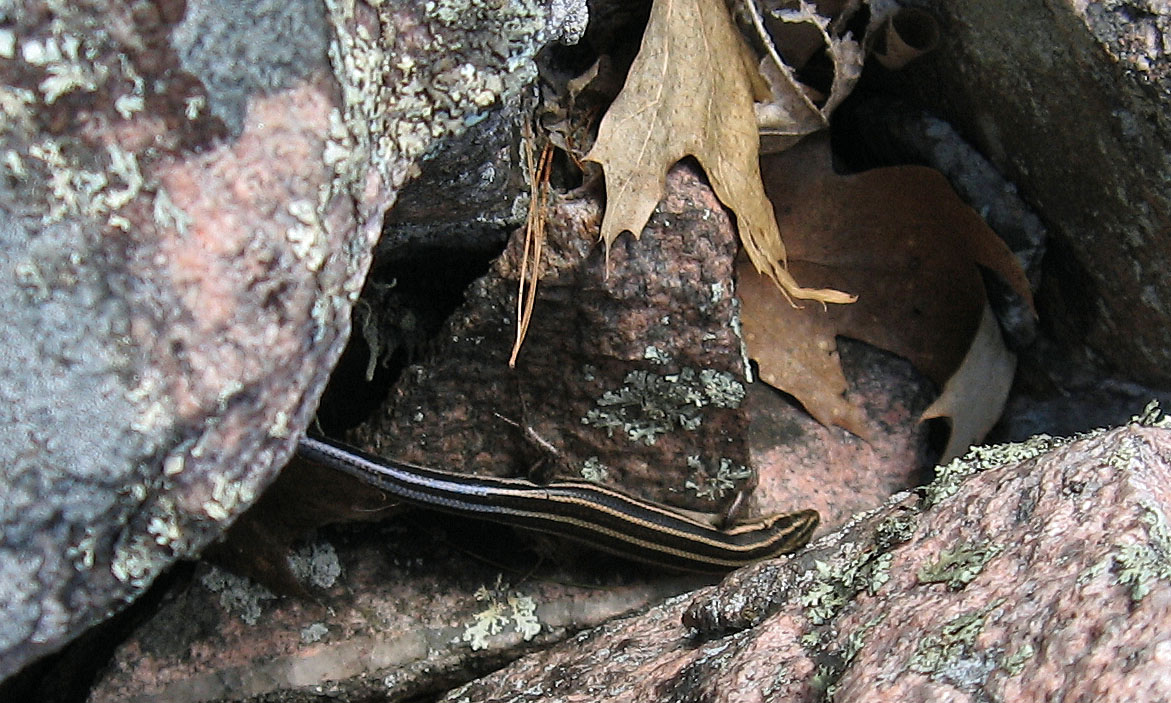Prince Edward County, Ontario, Canada
Lizards in Trouble – Matt Ellerbeck
LIZARDS IN TROUBLE: BOTH IN ONTARIO and GLOBALLY
by Matt Ellerbeck
 Lizards have existed, relatively unchanged for over 200 million years. However, now lizards find themselves very much in trouble. Around 30% of the world’s lizard species are threatened with extinction. Lizards have existed, relatively unchanged for over 200 million years. However, now lizards find themselves very much in trouble. Around 30% of the world’s lizard species are threatened with extinction.One the biggest reasons that lizards are disappearing is their habitats (i.e their homes) are being destroyed. Many areas that were once suitable for lizards to live have now been demolished for developmental construction and agriculture. Mining and quarrying often destroy important rocky areas where lizards live. Habitats of all kinds are being lost at an alarming rate. Wetlands are drained, forests are logged and cut down, and rock outcrops are destroyed. Lizards are literally losing their homes and they are losing them rapidly! The expansion of urban areas threatens the suitable habitats that still remain. Where natural habitats do still exist, they are often cut off from one another or degraded. Fragmentation occurs when healthy areas of habitat are isolated from one another. These fragmented areas are known as habitat islands. Lizard populations are affected since gene flow between the populations is prevented. This increases the occurrence of inbreeding, which results in a decrease in genetic variability and the birthing of weaker individuals. Fragmented populations where inbreeding occurs often ends in a genetic bottleneck. This is an evolutionary event where a significant percentage of the population or species is killed or otherwise prevented from reproducing. Habitat fragmentation is also harmful because it often eliminates crucial requirements in the area (like shelter from the heat or cold, places to find prey, egg-laying sites, etc) which are critical to the survival of lizard populations. Without such habitat requirements populations dwindle.  Degradation occurs when the natural habitat has been altered and degraded to such a degree that it is unlikely that any remaining lizard species would be able to survive. Developments and agriculture near fragmented habitats put lizards at serious risk. Habitat destruction and degradation can also affect the availability of prey items, causing unnatural declines in appropriate food sources. Degradation occurs when the natural habitat has been altered and degraded to such a degree that it is unlikely that any remaining lizard species would be able to survive. Developments and agriculture near fragmented habitats put lizards at serious risk. Habitat destruction and degradation can also affect the availability of prey items, causing unnatural declines in appropriate food sources.Habitats are often isolated and cut off from one another by the roads and highways that now run through them. Countless numbers of lizards are killed on roads and highways every year when they are hit. Paved roads typically absorb and retain more heat than the surrounding habitat, lizards are often attracted to roads for thermoregulation (Case and Fisher 2001; Jochimsen et al. 2004). One study, conducted at Point Pelee National Park, indicated that hundreds of Five Lined Skinks (Plestiodon fasciatus) are killed annually on roads when they are hit by vehicles. It is important to note, this figure is for just one species from one park. Worldwide, legions are lizards are killed are roads. According to an objective road risk assessment method for multiple species: ranking 166 reptiles and amphibians in California (2018), A few wide ranging (lizard) species scored in the highest risk categories, including the Gila monster (Heloderma suspectum), leopard lizards (genus Gambelia) and two horned lizard species (genus Phrynosoma). The Gila monster has been negatively associated  with urbanization, where larger home ranges and greater movement rates result in higher mortality for males (Kwiatkowski et al. 2008). Sensitive to habitat fragmentation, the blunt-nosed leopard lizard (Gambelia sila) was found to be largely absent from habitat patches less than 250 ha (Bailey and Germano 2015). Flat-tailed horned lizards (Phrynosoma mccallii) are also susceptible to habitat fragmentation with very large home ranges for their size, particularly in wet years (Young and Young 2000). In fact, road mortality is a well-known threat for this species. Horned lizards are also particularly vulnerable to being killed on roads due to their tendency to flatten and remain motionless while being approached (Young and Young 2000). with urbanization, where larger home ranges and greater movement rates result in higher mortality for males (Kwiatkowski et al. 2008). Sensitive to habitat fragmentation, the blunt-nosed leopard lizard (Gambelia sila) was found to be largely absent from habitat patches less than 250 ha (Bailey and Germano 2015). Flat-tailed horned lizards (Phrynosoma mccallii) are also susceptible to habitat fragmentation with very large home ranges for their size, particularly in wet years (Young and Young 2000). In fact, road mortality is a well-known threat for this species. Horned lizards are also particularly vulnerable to being killed on roads due to their tendency to flatten and remain motionless while being approached (Young and Young 2000).Roads present an additional problem because they represent a form of habitat loss. The roads that run through natural areas also fragment the existing populations, drastically making them smaller in size. This limits the gene flow and genetic diversity between the isolated populations on either side and this greatly increases the chances of extirpation. When lizards attempt to cross roads to travel between the populations, or to critical breeding/birthing sites it greatly increases their chances of being hit and killed by vehicles. While human activities have negative effects on lizards, they have helped increase a number of snake predators. The increase in human waste has provided an unlimited food source for predators like skunks and raccoons. This has caused the number of these predators to increase significantly, and this surplus of predators takes its toll on certain lizard populations. Habitat loss, urban sprawl, and road mortality have wreaked havoc on lizard populations around the globe, and Ontario’s Five-Lined Skink (Plestiodon fasciatus) has also been affected. Two populations exist within the province. The Great Lakes/St. Lawrence population, which is listed as Special Concern. This means it is likely to become threatened or endangered because of a combination of biological characteristics and identified threats. The second is the Carolinian population, which is listed as Endangered (meaning it is facing imminent extirpation or extinction). However, despite these threats there are things people can do to help! https://www.endangeredspeciesinternational.org/reptiles6.html |
(photo credits may be seen by “mousing over” each photo)